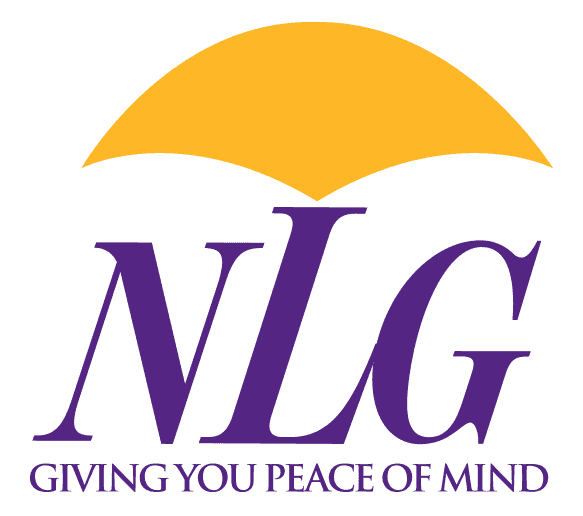
Santa Ana Chapter 13 Bankruptcy Attorney
Financial Relief Through Reorganization Bankruptcy
Chapter 13 bankruptcy offers qualifying filers an opportunity to obtain meaningful relief from debt. As a viable alternative to Chapter 7 bankruptcy for those with sufficient income, Chapter 13 can be a powerful tool for restructuring various debts into one manageable payment plan, catching up on missed payments over time, and protecting cherished assets like a home.
At Nguyen Law Group, Santa Ana Chapter 13 bankruptcy lawyer Andy Nguyen has helped clients across Southern California find their financial fresh starts through Chapter 13 and other Chapters of the U.S. Bankruptcy Code. If you’re struggling with debt and searching for sustainable solutions, we’re here to evaluate your options and discuss how we can help.
Ready to explore your debt relief options? Call (909) 328-6280 or complete an online form to request a FREE consultation with our Santa Ana Chapter 13 bankruptcy lawyer.
What Is Chapter 13 Bankruptcy?
Chapter 13 bankruptcy, also known as reorganization bankruptcy, is a legal process that allows individuals and some businesses to restructure debts while keeping their assets. Unlike Chapter 7, which involves liquidation of assets to pay creditors, Chapter 13 allows debtors to create a repayment plan spanning three to five years. This plan consolidates debts into manageable payments based on income and expenses.
Chapter 13 bankruptcy offers debtors many benefits, including:
- Foreclosure Defense: Chapter 13 provides an opportunity for homeowners to halt foreclosure proceedings and catch up on missed mortgage payments through the repayment plan, allowing them to keep their homes.
- Halt Vehicle Repossession: Individuals facing vehicle repossession can use Chapter 13 to stop the process and include past-due payments in the repayment plan, enabling them to retain ownership of their vehicles.
- Prevent Wage Garnishment: Filing Chapter 13 bankruptcy puts an immediate stop to wage garnishment, protecting the debtor's income and allowing them to address their debts in a structured manner.
- Protect Co-signers: Unlike Chapter 7, where co-signers are still liable for the debt, Chapter 13 allows debtors to protect co-signers by repaying the debt through the repayment plan, reducing the risk of financial strain on loved ones.
- Restructured Debts: Chapter 13 enables debtors to restructure various types of debt, including credit card debt, medical bills, and personal loans, into a single manageable monthly payment, simplifying their financial obligations.
- Debt Discharge: Upon successful completion of the repayment plan, remaining qualifying debts are discharged, providing the debtor with a fresh start and relief from overwhelming financial burdens.
- Flexible Repayment Options: Chapter 13 offers more flexibility than Chapter 7, allowing debtors to tailor the repayment plan to their income and expenses, making it easier to meet financial obligations while maintaining a reasonable standard of living.
What are the Eligibility Requirements?
To qualify for Chapter 13, an individual must meet specific requirements. Income stability is crucial, as debtors must demonstrate their ability to adhere to a repayment plan. Additionally, unsecured debts must not exceed a certain threshold, and secured debts must also remain within the legal limits set by federal bankruptcy law. A Santa Ana Chapter 13 bankruptcy attorney can review these qualifications and advise whether this option is appropriate based on the financial situation.
What is the Chapter 13 Bankruptcy Process?
- Petition Filing: The Chapter 13 process begins with the debtor filing a petition with the bankruptcy court, along with schedules of assets, liabilities, income, and expenses.
- Creation of Repayment Plan: Within 14 days of filing, the debtor must propose a repayment plan, outlining how they will repay creditors over the next three to five years. A well-crafted repayment plan considers not just current income and expenses but also factors in potential changes in financial circumstances, ensuring flexibility and sustainability.
- Meeting of Creditors: Approximately 20 to 50 days after filing, the debtor attends a meeting of creditors where creditors can ask questions about the proposed plan. This meeting allows the debtor to explain their situation firsthand and negotiate terms if necessary, laying the groundwork for a plan that satisfies all parties involved.
- Confirmation Hearing: A confirmation hearing is held when the bankruptcy court approves or rejects the proposed repayment plan. If approved, the debtor begins making payments to the trustee.
- Plan Execution: Over the next three to five years, the debtor adheres to the repayment plan, making regular payments to the trustee who then distributes funds to creditors. Adhering to the plan requires discipline and may involve revisiting budgeting strategies to ensure timely payments.
- Debt Discharge: Upon successful completion of the repayment plan, remaining qualifying debts are discharged, providing the debtor with a fresh financial start.
As a firm that places an emphasis on personal attention, our team at Nguyen Law Group guides clients through every step of the Chapter 13 process. From evaluating your eligibility, gathering needed documentation, and formulating sensible payment plans to preparing for creditor meetings and court hearings, we offer guidance that’s meant to support you through unfamiliar proceedings and lead you successfully toward your debt discharge.
What are the Benefits of Chapter 13 Bankruptcy?
One of the most significant advantages of Chapter 13 is the ability to prevent foreclosure. Individuals facing the loss of their home can use bankruptcy to catch up on missed mortgage payments and avoid eviction. Additionally, Chapter 13 can stop wage garnishments, creditor harassment, and repossessions. A Santa Ana Chapter 13 bankruptcy attorney can explain these benefits and develop a strategy tailored to individual financial goals.
Another advantage is the opportunity to consolidate debt into a single monthly payment. Instead of dealing with multiple creditors and varying interest rates, debtors make one structured payment through the bankruptcy trustee. This simplifies financial obligations and makes budgeting more manageable. A Santa Ana Chapter 13 bankruptcy lawyer can structure a repayment plan that maximizes debt relief while ensuring compliance with the law.
What are Common Challenges with Chapter 13 Bankruptcy and How to Overcome Them?
Although Chapter 13 offers significant benefits, challenges may arise during the repayment period. Unexpected financial hardships, such as job loss or medical emergencies, can make it difficult to maintain payments. In such cases, modifications to the plan may be possible, or conversion to Chapter 7 may be considered. A Santa Ana Chapter 13 bankruptcy lawyer can assist in addressing these obstacles and finding alternative solutions that protect financial interests.
Another challenge is ensuring compliance with all legal obligations. Missing payments or failing to adhere to court orders can lead to dismissal of the case. A Santa Ana Chapter 13 bankruptcy attorney provides ongoing support, ensuring that clients remain on track and avoid potential pitfalls that could jeopardize their financial recovery.
Call to Request a FREE Consultation: (909) 328-6280
There is no better time than now to explore your options for meaningful debt relief. At Nguyen Law Group, we’re available seven days a week to help potential clients evaluate their current situations and assess whether options like Chapter 13 bankruptcy make sense. If you have questions about your financial circumstances and how we can help, don’t hesitate to reach out.
Our Santa Ana Chapter 13 bankruptcy attorney serves clients across Orange County, the Inland Empire, and beyond. Give us a call at (909) 328-6280 or contact us online to request a FREE and confidential consultation.
Chapter 13 Bankruptcy FAQ
Who Can File Chapter 13 Bankruptcy?
While there's no strict means test, individuals and some businesses must have a regular income and debts within certain limits to qualify for Chapter 13. Additionally, debtors must demonstrate the ability to adhere to a repayment plan. It's crucial to assess both income sources and expenses to determine the feasibility of maintaining regular payments over the duration of the plan.
How Long Does it Take to Complete a Chapter 13 Plan?
Chapter 13 plans typically last three to five years, depending on the debtor's income and the amount of debt. The exact length of the plan is often decided by the court based on thorough analysis of the debtor’s financial situation and the specifics of the proposed repayment strategy, ensuring it's fair and manageable.
Why Would Someone Choose Chapter 13 Over Chapter 7?
Individuals may opt for Chapter 13 to save their homes from foreclosure, protect co-signers, or restructure debts that cannot be discharged under Chapter 7. Chapter 13 also allows debtors to catch up on missed mortgage or car payments through the repayment plan. Additionally, if circumstances change, a Chapter 7 case can be converted to Chapter 13. Chapter 13 offers a more strategic approach for those wishing to protect significant assets while ensuring long-term debt management.
How Does a Chapter 13 Debt Discharge Work?
Upon successful completion of the repayment plan, remaining qualifying debts are discharged, providing the debtor with relief from those obligations. However, certain debts such as student loans, child support, and most taxes may not be dischargeable. Understanding which types of debt are affected is vital for strategic financial planning and for setting realistic expectations about the outcomes of filing for Chapter 13.
Can Spouses File Jointly Under Chapter 13?
Yes, spouses can file jointly under Chapter 13, allowing them to consolidate their debts and create a single repayment plan. This can simplify the bankruptcy process, potentially reducing overall costs and enabling a more cohesive financial strategy, particularly when both parties share financial responsibilities or debts.
How Can Chapter 13 Protect Your Home in Santa Ana?
Protecting a home is often a primary concern for those facing financial challenges in Santa Ana. By filing for Chapter 13 bankruptcy, homeowners can leverage legal provisions to halt foreclosure actions and integrate past-due mortgage payments into their repayment plan. This gives individuals time to stabilize their financial status without losing their homes. Working with experienced professionals, debtors can explore local real estate trends and mortgage regulations to develop a comprehensive plan that aligns with the unique conditions of the Santa Ana housing market.
What Role Does a Trustee Play in Chapter 13 Bankruptcy?
In Chapter 13 bankruptcy, a trustee plays a vital role in managing and overseeing the debtor’s repayment plan. The trustee collects monthly payments from the debtor and distributes these funds to creditors according to the confirmed plan terms. They are also responsible for reviewing the proposed repayment strategy, ensuring it complies with bankruptcy laws, and addressing any concerns from creditors or the court. Understanding the trustee's role and effectively communicating with them is crucial for maintaining the integrity of the repayment process and facilitating a successful bankruptcy outcome.

Committed to Our Clients & Our Community
How We Stand Out
-
Affordable & Effective
-
Extensive Legal Knowledge
-
Personal Service & Availability
-
Trustworthy & Reliable


-
Why Hire Us?
We have the experience, skill, and compassion necessary for handling your legal matters. Learn why we are the right choice for you.
-
What We Do
If you have bankruptcy or estate planning matters to discuss, we are the right firm for you. Learn more about how we can help you.
-
Contact Us
Reach out to us today for a consultation to discuss your unique case. Our initial consultations are free!